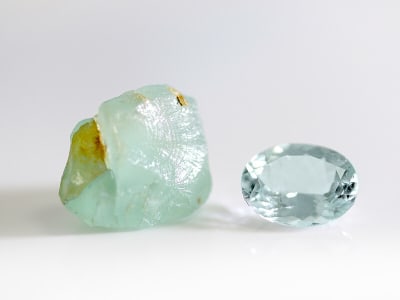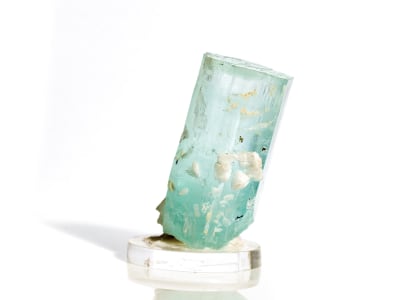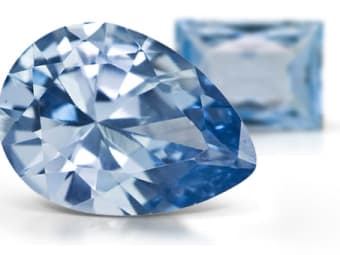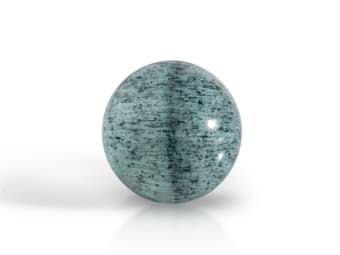Aquamarine is the blue to green-blue gemstone variety of beryl. It is the birthstone for March. The name aquamarine comes from two Latin words aqua marinus meaning “water of the sea”. The color comes from trace amounts of iron in the stone. Aquamarine is typically greenish blue in nature, so it is heat treated to remove the yellow component, and to produce a true-blue color. Brazil is the largest producer of aquamarine, but fine quality stones can be found around the world.
General Information
Tolerance:(+0.017/-0.017)
LWUV: Inert
Aquamarine Colors
-
 Blue
Blue -
 Blue
Blue -
 Blue
Blue
Aquamarine Spectra
We acknowledge the significant scientific contributions of John S Harris, FGA to the study of gemstone spectra and with deep appreciation to him, acknowledges the use of his images and related notes about gemstones and their spectra in the educational materials on this website.
Countries of Origin
Tanzania, United Republic Of; Afghanistan; Viet Nam; Sri Lanka; United States of America; Belize; Madagascar; Zambia; Kenya; Bolivia (Plurinational State of); India; Mozambique; Pakistan; Unknown; China; Namibia; Brazil; Nigeria; Ethiopia; Nepal
History
Dive into the cool, inviting color of the wonderfully sea-blue aquamarine. Aquamarine is a member of the beryl family and a "sibling" stone to emerald and morganite. How can stones from the same family appear so very different? A gemstone's natural color typically comes from trace elements. In the case of aquamarine, its color comes from iron. Color is also impacted by gem treatments. Aquamarine is often heated to bring out the most desirable shades. Aquamarine is pleochroic, which means it shows different colors in different crystal directions. Heat-treatment helps eliminate pleochroism in aquamarine. Savvy lapidaries cut aquamarine to minimize the effects of any pleochroism and to optimize its fall-in-love-with-me-blue hues. Aquamarine is typically found in very large crystals, which makes it a tempting stone for collectors. Measuring 7.5 - 8 on the scale of gemstone hardness, aquamarine is very wearable, which makes it ideal for jewelry lovers.
Care
Normal care

More About Aquamarine
The contemporary birthstone for the month of March, folklore tells us that ancient cultures believed aquamarine brought courage, luck, and calm to its wearer. It is also thought, by some, to enhance the happiness of marriage.
Creation Classification
Lab Created
Hydrothermally grown lab created gems crystallize slowly out of a solution (a mix of water and dissolved elements) that has been exposed to heat and pressure similar to the conditions on Earth under which the natural gem mineral grows. Lab created gems have the same chemical, optical, and physical properties of their natural counterparts, but are a more cost-effective alternative to a natural gem.






